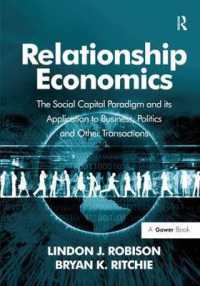Full Description
The school accountability movement's focus solely on improving standardized test scores is dehumanizing. There is no standardized child. In the rush to quantify, evaluate, and ostensibly improve the American educational system, we have forgotten that education is complicated. Any attempt to distill it into a simplistic measure will fall short - and will compromise the nobility of the work.
How can teachers continue to do the incredibly challenging work of effective education in an environment that can be downright damaging?
We can save the soul of education by resisting the dehumanization of students. Teachers can shield children by embracing social-emotional learning, building trust, and displaying compassion. There is no quick-fix to creating a nurturing relationship. There is no single data point that can measure it. Teachers must commit to being present, paying attention, maintaining consistency, engaging in hard work, practicing humility, and working together.
Angels and Superheroes provides specific, reproducible practices designed to help teachers cultivate trust and compassion, while managing the pressures of the testing movement. With time-proven theories and cutting-edge research, this book provides engaging examples, concrete strategies, and implementable resources to support teachers in bridging the divide between why they chose this career field - the children, and that which is currently being required of them - the test scores.
Contents
Foreword- Paula Polk Lillard
Acknowledgments
Introduction
Chapter 1: The Problem, The Solution, and Our Goal
Chapter 2: Create a Culture for Academic Respect and High Standards
Chapter 3: Building a Caring and Supportive Community in the Classroom and Beyond
Chapter 4: Create a Climate of Interpersonal Respect
Chapter 5: Discover How Misbehavior Reveals Unmet Needs
Chapter 6: Design Instruction to Create an Inclusive Environment for All Learners
Chapter 7: Utilizing Real World Experiences to Enhance Learning
Chapter 8: Practice What You Preach—Modeling Effects Real Change
Bibliography
About the Authors








